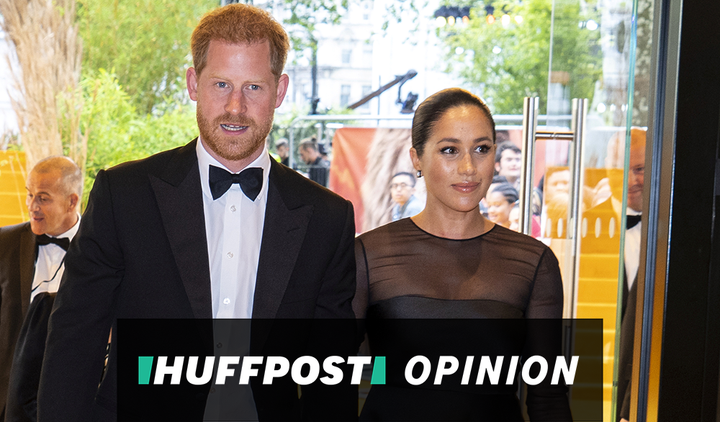
Looking back on the major political and cultural stories of the last few months, it’s clear that the UK finds itself in a particularly self-congratulatory period when it comes to race. Of course, some of the summer adulation is warranted — take Stormzy’s barnstorming headline set at Glastonbury, rich with allusions to Black British culture, as a genuinely impactful example. Or for a symbolically sweeter (though by no means straightforward) headline, try a scoop of the birth of mixed-race royal baby Archie.
But as with most celebrations, positive responses have the capacity to go overboard, lending a misplaced sense of good health to a nation infected with racism. In high office, that people of colour now lead the Treasury and Home Office needs to be measured against the negative effects these individuals have had on ethnic minority populations: endangering UK nationals by stripping them of citizenship, or favouring the death penalty despite the disproportionate overrepresentation of ethnic minorities in Britain’s criminal justice system. All is not well at the top.
“We need to insist on big-picture thinking when it comes to racism, and accepting cause and effect is the first step.”
In Britain, there is a widely disconnected understanding of how structural inequality breeds casual racist behaviours, and how this can lead to more serious violence. Discomfort frustrates our ability to widen the definition of racism beyond physical attacks. But overlooking how behaviour, structure and violence are connected when it comes to racism is perhaps our most fatal flaw.
Behaviour encompasses everyday racist acts and speech: low-effort, mostly un-criminal and readily amplified by the internet. Think the BBC’s Danny Baker posting a picture of a chimp representing baby Archie, or MP Angela Smith’s remarkable ‘funny tinge’ skin tone comment in February. Our current prime minister’s contributions are also well documented, but his status tells you all you need to know about our relative indifference to these outbursts (Baker’s dismissal was a welcome exception). We can also include incidents which reveal underlying prejudices: Caroline Lucas’ proposed anti-Brexit cabinet of white women, the animalistic language used to describe migrants, or the media’s persistent hounding of Meghan Markle, most recently over her private jet usage. These can – albeit complacently – be termed as ‘low-level’ or street racism. This kind happens all around us.
[READ MORE: ‘Funny Tinge’: Why Can’t People Stop Saying Bizarre, Racist Things In Interviews?]
The second concept, structure, is the trickiest to hammer into the public consciousness. It relates to society’s unequal organisation, which negatively affects ethnic minorities, while also doubly hurting those in intersecting marginalised groups. Easy to disregard and deny, it’s a world of reports and statistics betraying harsh realities, with a handful of publicly recognisable flag bearers unfairly tasked with bringing reluctant attention to very basic facts. The Lammy Review does the hard work: “Black people make up around 3% of the general population but accounted for 12% of adult prisoners in 2015/16,” it warns. And yet, stop and search looks set to intensify, a result of our turn-a-blind-eye approach to structural inequality.
“In the US, although racially motivated violence is more prevalent so is the acceptance – on one side of the political spectrum at least – that structural inequality is the bedrock for racial abuses, especially by law enforcement officials.”
This leaves us with violence. The one language that all citizens understand. Comparing it to racist behaviours and societal structure, the key difference with violence is that it unifies in condemnation. Racialised deaths punctuate Britain’s social history. Stephen Lawrence in 1993, Anthony Walker in 2005, the Finsbury Park Mosque attack in 2017. We unite because it’s unthinkable not to, not because we take collective responsibility.
We need to insist on big-picture thinking, and accepting cause and effect is the first step. Low-level racism is a result of beliefs entrenched and protected by continued societal inequality; if left unreformed, these views lead to violence ranging from harassment to terrorism. We need to update our understanding of racism to include the high-risk pathways between behaviour and structure, and between structure and violence. Sometimes the gaps are even filled for us, as with the Home Office’s chicken shop #KnifeFree campaign. Racism is more than just a set of bad words and thugs throwing bricks. We are undoubtedly complacent.
In the US, although racially motivated violence is more prevalent, so is the acceptance – on one side of the political spectrum at least – that structural inequality is the bedrock for racial abuses, especially by law enforcement officials. Highlighting the link between racist behaviour, structure and violence is a credible political stance in the USA, embodied by groups such as Black Lives Matter. America has more extreme problems, but it also has more extreme solutions. Recent positive coverage of Ibram X. Kendi’s book How to Be an Antiracist illustrates this, as does the genuinely thoughtful discussion surrounding reparations for African Americans at the recent Democratic Debates. Compared with attitudes here, our national conversation lags badly. After Stormzy stole the summer show, it’s now time for all of us to speak up.
Ravi Ghosh is a freelance writer.
Welcome to HuffPost Opinion, a dedicated space for reliable, expert commentary and analysis on the day’s biggest talking points. Got a unique angle or viewpoint on a news story that will help cut through the noise? We want to hear from you. Get in touch here.
